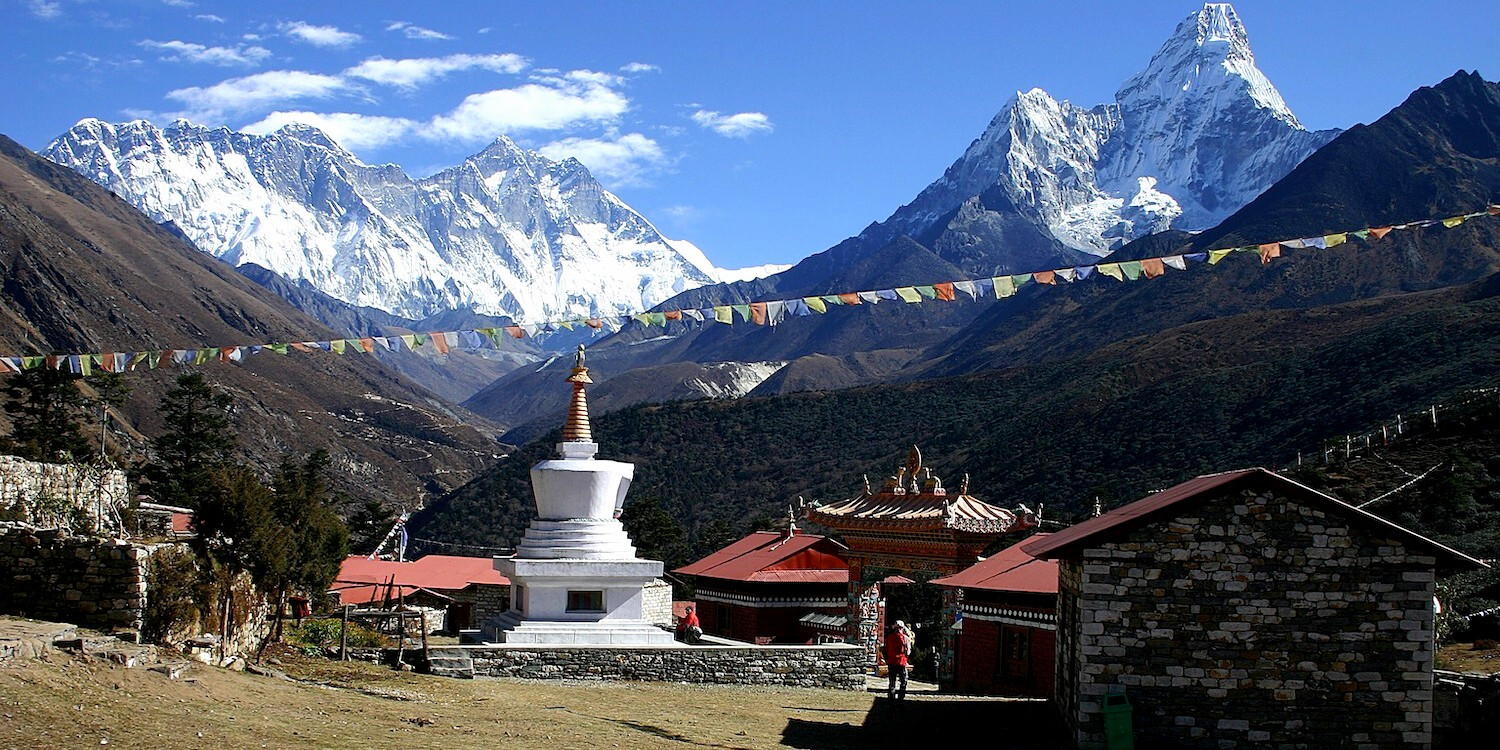Lukla
Lukla, often considered the gateway to the majestic Everest, is a small town nestled in the Khumbu region of Nepal. It's famously known for the Tenzing-Hillary Airport, regarded as one of the most dangerous airports in the world due to its short runway and dramatic location at an elevation of 2,860 meters (9,383 feet). Despite the thrill and challenge of landing here, Lukla is more than just an entry point for trekkers and mountaineers aiming to conquer the trails leading to Everest Base Camp and other high-altitude treks in the region.
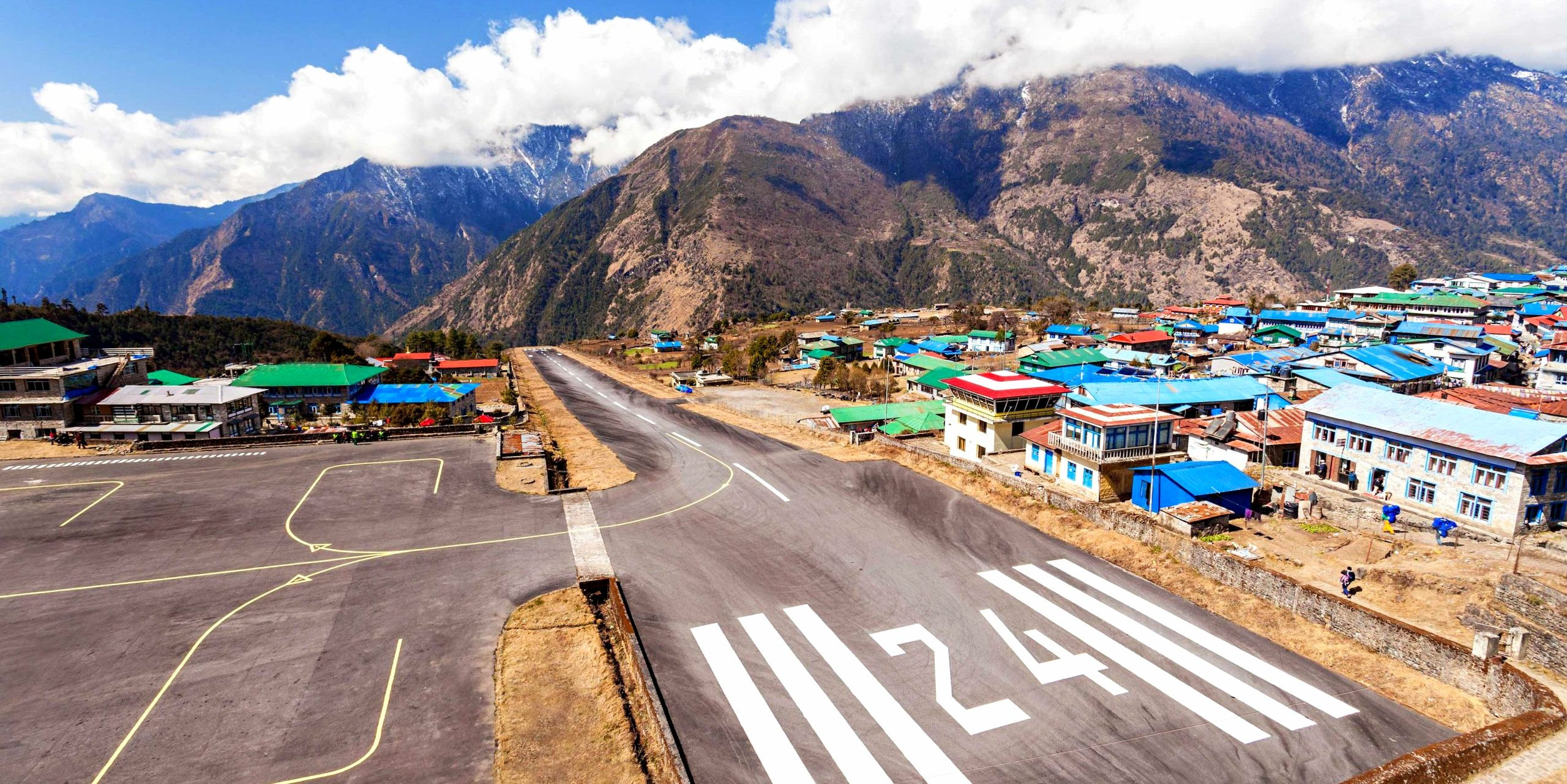
-
Gateway to Everest: Lukla serves as the primary entry point for trekkers and climbers heading to Everest Base Camp and other treks in the Khumbu region. Its strategic location makes it an essential stop for acclimatisation and preparation before heading deeper into the mountains.
-
Tenzing-Hillary Airport: Known for its short runway and dramatic location, the Tenzing-Hillary Airport in Lukla is among the most challenging airports globally. Landing and taking off from Lukla is an adventure in itself, offering an adrenaline-pumping start to the trekking journey.
-
Sherpa Culture and Hospitality: Lukla is home to a strong community of Sherpas, renowned for their mountaineering expertise and warm hospitality. Trekkers can experience the rich Sherpa culture and traditions firsthand in Lukla, gaining insights into the lives of the people who call the Himalayas home.
-
Last-minute Supplies and Gear: For trekkers who need to make last-minute purchases or rentals, Lukla offers a variety of shops selling trekking gear, clothing, and other essentials. It's the final opportunity to ensure you have everything needed for the trek ahead.
-
Diverse Accommodation Options: From budget-friendly guesthouses to more comfortable lodges, Lukla caters to a wide range of preferences and budgets. These accommodations provide a comfortable space to rest and acclimatise before embarking on the trek.
-
Memorials and Monuments: Lukla houses several memorials dedicated to climbers and trekkers who have perished in the mountains. These sites serve as a sobering reminder of the risks associated with high-altitude trekking and climbing, emphasising the importance of safety and preparation.
-
Scenic Beauty and Atmosphere: Despite its bustling nature, Lukla is surrounded by stunning natural beauty, offering panoramic views of the mountains and valleys. The town's atmosphere is charged with anticipation and excitement, as trekkers from around the world gather to embark on their Himalayan adventures.
-
Opportunities for Acclimatisation: Spending time in Lukla allows trekkers to begin acclimatising to the higher altitudes. This is crucial for preventing altitude sickness and ensuring a more enjoyable and successful trekking experience.
Lukla is not just a starting point for treks but a vibrant community rich in culture, history, and natural beauty, offering trekkers a unique and memorable experience as they prepare for the journey ahead.
Namche Bazaar
Namche Bazaar, often referred to as the gateway to the high Himalayas, is a crucial and vibrant stop on the route to Everest Base Camp. This bustling town not only serves as a major trading hub for the Khumbu region but also as an essential acclimatisation point for trekkers and climbers heading further up into the mountains. Here's why Namche Bazaar is a highlight for many on their journey to Everest Base Camp:
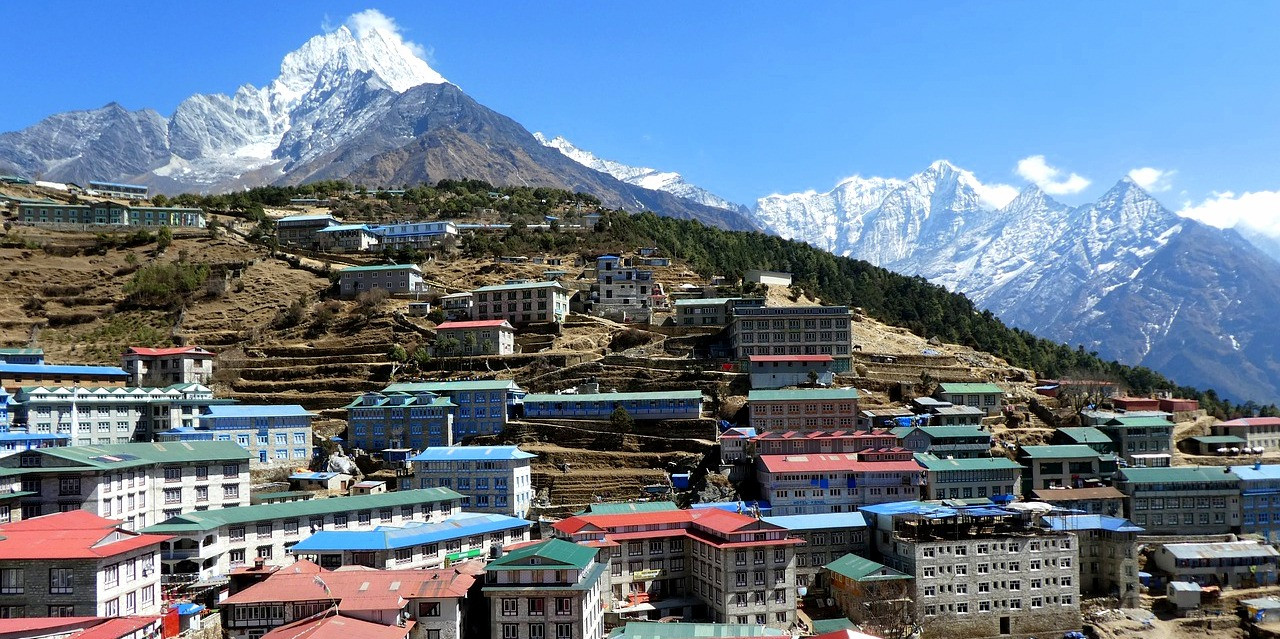
-
Acclimatisation Hub: Located at an altitude of approximately 3,440 metres (11,286 feet), Namche Bazaar is the perfect place for trekkers to spend a few days acclimatising to the high altitude. This helps in minimising the risks of altitude sickness, which is crucial for a successful trek.
-
Cultural Heart of the Sherpa Community: Namche offers a deep dive into Sherpa culture, with opportunities to visit local museums, monasteries, and cultural centres. It's a place where trekkers can learn about the traditions, lifestyle, and beliefs of the Sherpa people, who are renowned for their mountaineering prowess.
-
Economic Centre: As a historical trading post, Namche Bazaar buzzes with activity. Locals from nearby villages come to buy and sell goods, making it a lively market town. Trekkers can find everything from handmade local crafts to trekking gear, making it a great place to pick up any last-minute items or souvenirs.
-
Stunning Views: Namche offers spectacular views of the Himalayan giants, including Everest, Lhotse, Ama Dablam, and Thamserku. The famous Everest View Hotel is a short hike away, offering panoramic vistas of these iconic peaks.
-
Wide Range of Accommodations: From basic teahouses to more luxurious lodges, Namche caters to all levels of comfort and budget. This allows trekkers to rest and rejuvenate in a setting that suits their preferences before continuing their journey.
-
Dining and Relaxation: Namche Bazaar is well-equipped with a variety of cafes, bakeries, and restaurants, offering both local and international cuisine. It's a great place to enjoy a comforting meal and socialise with fellow trekkers from around the world.
-
Connectivity and Services: Despite its remote location, Namche provides a range of services, including internet cafes, money exchange facilities, and even ATMs, making it a convenient spot for trekkers to reconnect with the world and manage their finances.
-
Gateway to Further Exploration: Namche serves as a launching pad for various treks and expeditions in the region, including routes to Tengboche Monastery, Gokyo Lakes, and, of course, Everest Base Camp. It's the last major stop where trekkers can enjoy a semblance of urban comfort before delving into more austere high-altitude environments.
Namche Bazaar is more than just a checkpoint on the Everest Base Camp trek; it's a vibrant, cultural, and scenic hub that offers trekkers a rich Himalayan experience. Its strategic importance for acclimatisation, coupled with its cultural significance and the amenities it offers, makes it a key highlight of the trek.
Tengboche Monastery
Tengboche Monastery, also known as Dawa Choling Gompa, stands as a spiritual beacon in the Khumbu region, offering tranquilly and breathtaking views to trekkers on their way to Everest Base Camp. Nestled at an altitude of approximately 3,867 metres (12,687 feet) and set against the backdrop of majestic Himalayan peaks like Ama Dablam, this Buddhist monastery is not just a place of worship but a pivotal stop for reflection and acclimatisation on the trek. Here are the key aspects that make Tengboche Monastery a must-visit:
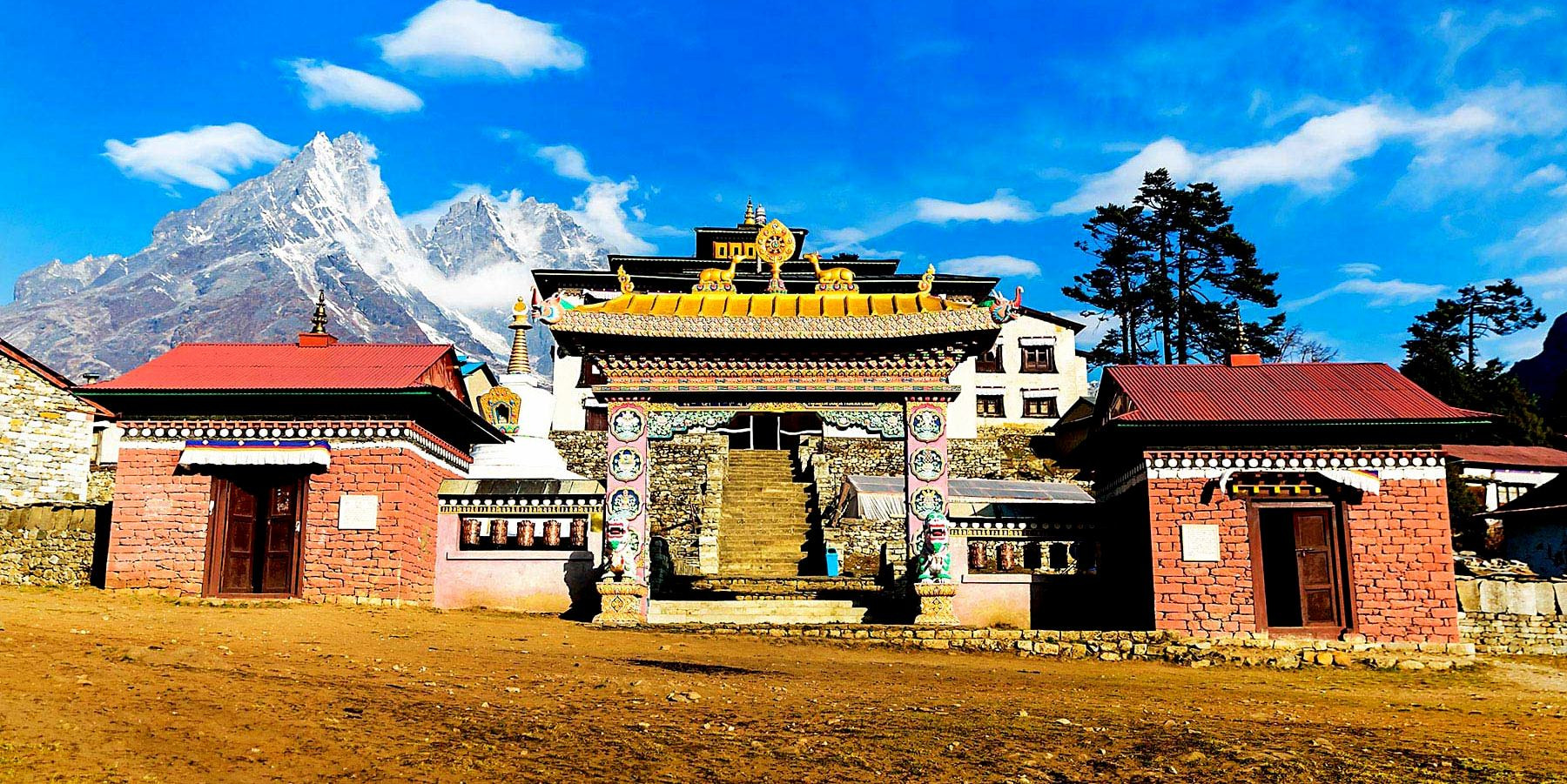
-
Spiritual Center: As the largest gompa in the Khumbu region, Tengboche Monastery serves as a spiritual center for Sherpas and trekkers alike. Visitors are often moved by the peaceful ambiance and the opportunity to witness Buddhist rituals and practices.
-
Architectural Beauty: The monastery's architecture is a sight to behold, with ornate decorations, traditional Tibetan designs, and vibrant murals that depict Buddhist lore. The intricate craftsmanship reflects the rich cultural heritage of the Himalayas.
-
Panoramic Views: The monastery's location offers unparalleled views of the Himalayan range, including Mount Everest, Lhotse, Nuptse, and Ama Dablam. The serene and majestic surroundings enhance the spiritual experience of visiting Tengboche.
-
Cultural Insight: Tengboche Monastery is a place where trekkers can immerse themselves in Sherpa culture and Buddhism. The monastery hosts several festivals and religious ceremonies throughout the year, the most famous being the Mani Rimdu festival, which attracts visitors from around the world.
-
Reconstruction and Resilience: The monastery has a history of resilience, having been rebuilt several times after being damaged by fires and earthquakes. Each reconstruction has been a testament to the local community's dedication to preserving their spiritual heritage.
-
Environment of Reflection: For many trekkers, the visit to Tengboche Monastery offers a moment of reflection and peace amidst the physical challenges of the trek. It provides an opportunity to meditate, relax, and connect with the spiritual essence of the Himalayas.
-
Acclimatisation Stop: Positioned roughly halfway to Everest Base Camp, Tengboche makes an ideal acclimatization stop. Trekkers can spend time exploring the monastery and surrounding area while allowing their bodies to adjust to the altitude.
-
Educational Experience: Visitors have the opportunity to learn about Buddhism and Sherpa culture from the resident monks. The monastery also houses a small museum with religious artefacts and information on the region's history.
Tengboche Monastery embodies the spiritual, cultural, and natural beauty of the Everest region. Its serene environment, coupled with the rich cultural experience it offers, makes it a highlight of the Everest Base Camp trek. A visit to Tengboche not only enriches the physical journey to Everest but also provides a profound insight into the spirituality and resilience of the Himalayan people.
Everest Base Camp
Everest Base Camp, situated at an elevation of approximately 5,364 metres (17,598 feet) in the Solukhumbu District of Nepal, is not merely a destination but a dream for many trekkers and mountaineers worldwide. This iconic base camp lies at the foot of the world's highest peak, Mount Everest, known locally as Sagarmatha in Nepali and Chomolungma by Tibetans and Sherpas. The journey to Everest Base Camp (EBC) is as rewarding as it is challenging, offering a blend of natural beauty, cultural richness, and a profound sense of accomplishment. Here are the key aspects that make Everest Base Camp a pinnacle experience for trekkers:
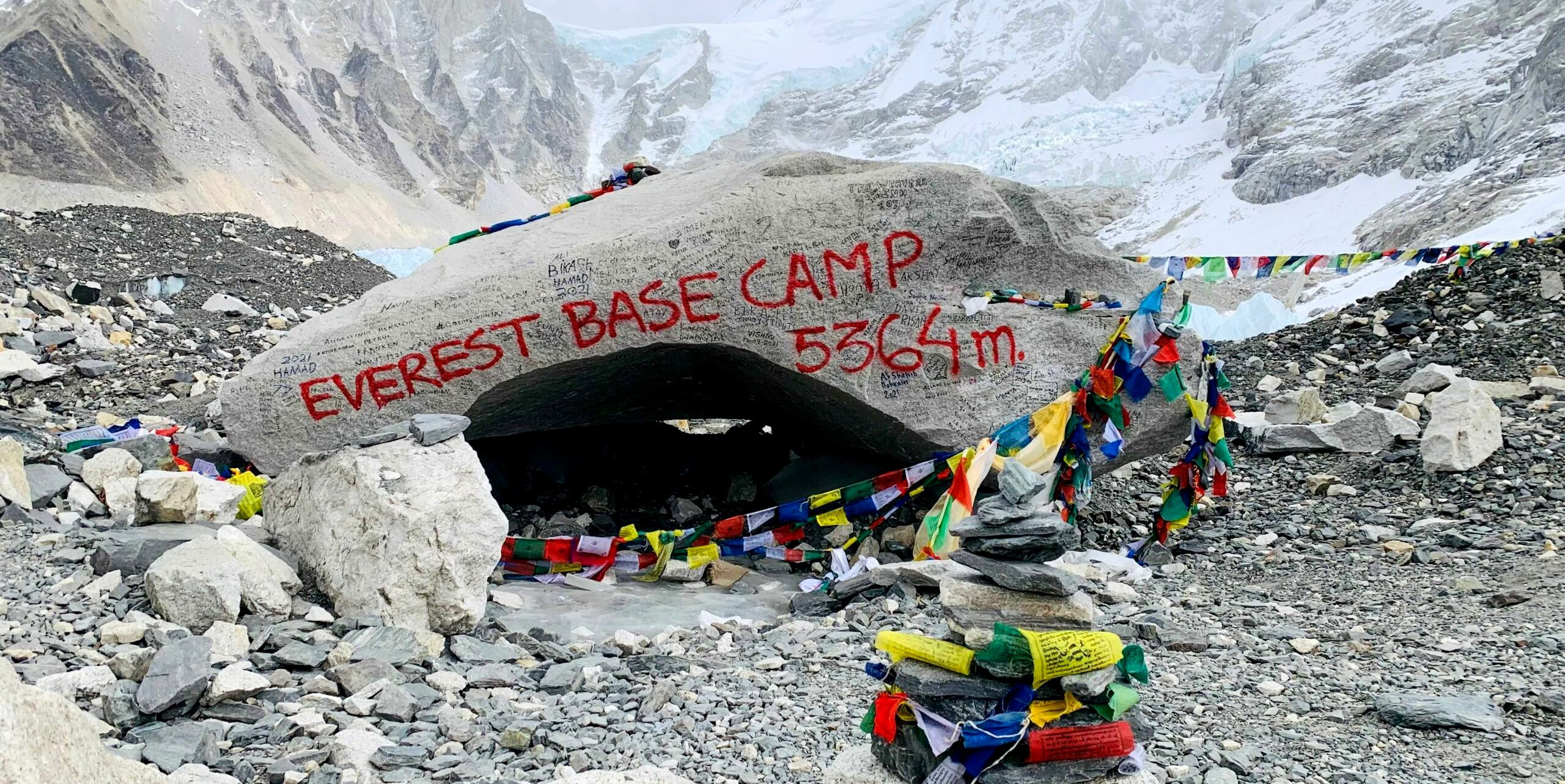
-
Ultimate Trekking Goal: Reaching Everest Base Camp is considered a major achievement for trekkers, symbolizing perseverance, endurance, and the spirit of adventure. It's a bucket-list destination for many, providing a close-up view of the mighty Everest.
-
Breathtaking Scenery: The trek to EBC is filled with stunning landscapes, including towering peaks, dramatic glaciers, and picturesque valleys. The Khumbu Icefall, visible from Base Camp, is particularly awe-inspiring.
-
Cultural Immersion: The route to Everest Base Camp winds through Sherpa villages, allowing trekkers to experience the warm hospitality and rich culture of the Sherpa people. Visits to monasteries and museums along the way offer insights into Buddhist traditions and the history of Everest expeditions.
-
Challenging Trek: The trek to EBC is physically demanding, involving long days of walking at high altitude. This challenge is part of what makes reaching Base Camp so rewarding. Preparation and acclimatisation are key to enjoying the trek and minimising the risk of altitude sickness.
-
Wildlife and Ecology: The region is home to unique flora and fauna, including the elusive snow leopard, Himalayan tahr, and colourful pheasants. Trekkers traverse diverse ecosystems, from lush rhododendron forests to alpine tundra.
-
Global Community: The trek to Everest Base Camp attracts adventurers from around the globe, creating a diverse community of trekkers sharing the trail. The camaraderie experienced among trekkers and the bonds formed during the journey are often highlights of the trip.
-
Memorial Sites: Along the route, trekkers encounter memorials dedicated to climbers who have perished on Everest. These sites serve as poignant reminders of the mountain's challenges and the respect it commands.
-
Spectacular Vistas: From various points on the trek, including Kala Patthar, trekkers are rewarded with spectacular views of Everest and its neighboring peaks. Sunrise and sunset views from these vantage points are particularly breathtaking.
-
Ever-changing Landscape: The landscape of the Everest region is dynamic, with active glaciers, moving ice, and shifting trails. This ever-changing environment adds an element of unpredictability and awe to the trek.
Everest Base Camp represents more than just a physical location; it embodies the aspirations, challenges, and triumphs of those who trek to its grounds. It's a place where the magnificence of nature meets human determination, creating an unforgettable experience that resonates long after the journey is over.
Kala Patthar
Kala Patthar, meaning 'black rock' in Nepali, is a notable landmark on the trek to Everest Base Camp, renowned for offering one of the most breathtaking views of Mount Everest, the highest peak in the world. Situated at an altitude of approximately 5,545 meters (18,192 feet), Kala Patthar provides a higher vantage point than Everest Base Camp itself, making it a must-visit for trekkers seeking the ultimate view of Everest along with its surrounding giants such as Nuptse, Lhotse, and Pumori. Here's why Kala Patthar stands out as a highlight for many trekkers:
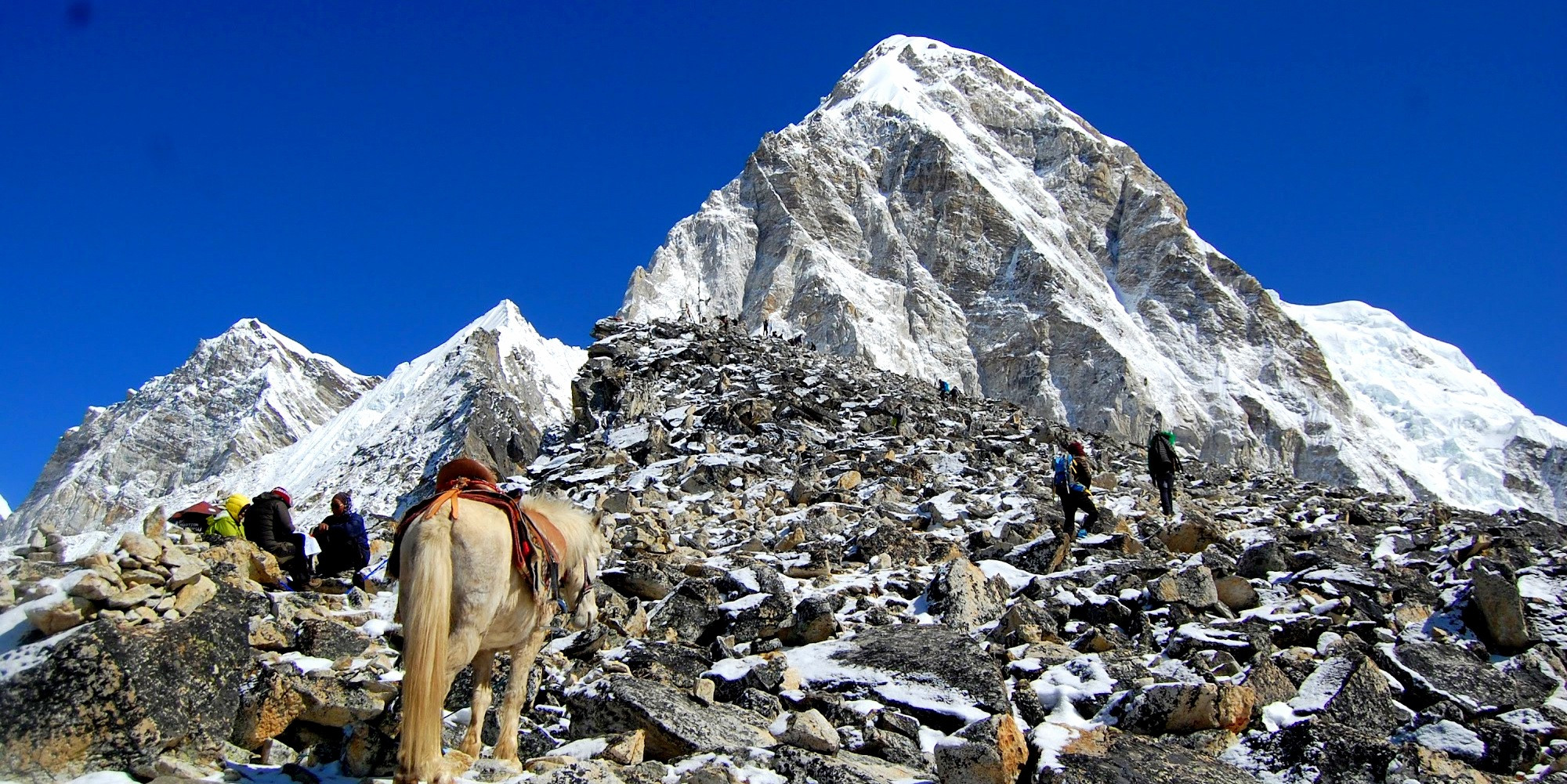
-
Unparalleled Views of Everest: The summit of Mount Everest cannot be seen from the Base Camp due to its towering neighboring peaks. Kala Patthar offers a clear, unobstructed view of Everest's western face, providing trekkers with the most iconic view of the mountain.
-
Sunrise and Sunset Spectacles: Trekkers often ascend Kala Patthar early in the morning or during the evening to witness the mesmerizing sunrises and sunsets over Everest. The golden light playing on the snow-capped peaks creates a magical and unforgettable panorama.
-
Achievable Challenge: Although the climb to Kala Patthar is steep and demanding, especially considering the altitude, it is considered an achievable challenge for most trekkers who have acclimatised properly on their journey to Everest Base Camp. Reaching the summit of Kala Patthar is a significant accomplishment in its own right.
-
Photographic Paradise: For photography enthusiasts, Kala Patthar is the perfect place to capture the magnificence of the Himalayas. The sweeping landscapes and close-up views of Everest make for some of the most dramatic and memorable photographs of the entire trek.
-
Moment of Reflection: Standing atop Kala Patthar, surrounded by some of the tallest peaks in the world, provides a profound sense of perspective. It's a moment to reflect on the journey, the beauty of nature, and one's place in the vastness of the landscape.
-
Accessible Summit: Unlike the technical climb to the summit of Everest, Kala Patthar offers a non-technical route that does not require climbing equipment or advanced mountaineering skills, making it accessible to a broader range of trekkers.
-
Symbol of Perseverance: For many, the climb to Kala Patthar symbolises the spirit of adventure and the perseverance required to trek in the high Himalayas. It's a physical and mental challenge that rewards trekkers with a sense of achievement and awe.
The ascent to Kala Patthar is often cited by trekkers as one of the most memorable parts of their journey to Everest Base Camp. Not only does it provide unrivaled views of Everest and its surrounding peaks, but it also offers a unique opportunity to push personal boundaries and experience the majesty of the Himalayas in an intimate and profound way.
Sagarmatha National Park
Sagarmatha National Park, a UNESCO World Heritage Site since 1979, encompasses the highest peak in the world, Mount Everest (Sagarmatha in Nepali), and spans over an area of 1,148 square kilometres in the Himalayas of eastern Nepal. The park is not just home to the iconic Everest but also shelters several other peaks above 6,000 metres, offering a blend of natural beauty, biodiversity, and cultural richness. Here are the key features that make Sagarmatha National Park an integral and unforgettable part of the Everest Base Camp trek:
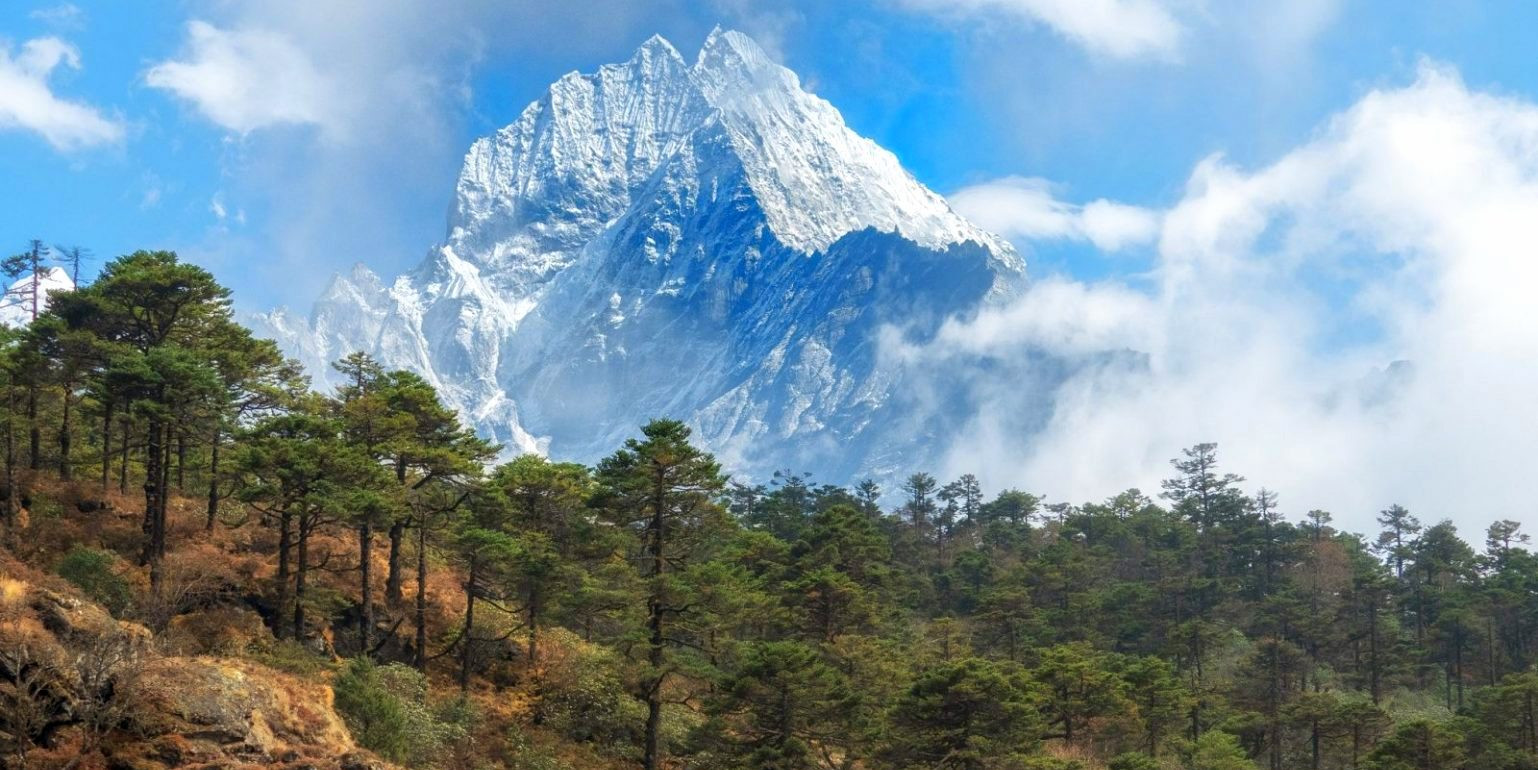
-
Breathtaking Natural Beauty: The park features rugged terrain with deep gorges, glaciers, and massive rocks, alongside the towering, snow-capped peaks of the Himalayas. Its dramatic landscapes offer some of the most spectacular natural scenery in the world.
-
Rich Biodiversity: Despite the harsh conditions at high altitudes, the park boasts a variety of flora and fauna. Lower regions are covered in pine and hemlock forests, while higher altitudes are home to shrubs and herbs. The park is a habitat for species such as the snow leopard, Himalayan tahr, red panda, and several bird species, including the impeyan pheasant (the national bird of Nepal).
-
Cultural Significance: Sagarmatha National Park is not only a natural wonder but also a cultural treasure. The park is inhabited by the Sherpa people, renowned for their mountaineering skills and rich cultural heritage rooted in Tibetan Buddhism. Trekkers can explore monasteries, stupas, and museums that offer insights into the Sherpa way of life and their deep spiritual connection to the mountains.
-
Trekking and Mountaineering: The park offers some of the world's most challenging and rewarding trekking and mountaineering experiences. Besides the famous Everest Base Camp trek, there are routes to Gokyo Lakes, the Three Passes Trek, and ascents of several high peaks.
-
Conservation Efforts: Sagarmatha National Park is an important conservation area, established to protect the unique ecosystem and biodiversity of the Himalayas. Efforts include managing human impact, preserving the habitats of endangered species, and safeguarding the cultural heritage of the Sherpa community.
-
Altitude Extremes: The park spans a range of altitudes, from 2,845 metres at its entrance in Monjo to the summit of Everest at 8,848 metres. This gradient supports a diverse range of ecosystems, from montane forests to alpine tundra and glaciers.
-
Educational Value: For those interested in geology, ecology, and environmental science, the park offers a living classroom. The dynamics of glaciers, high-altitude ecology, and conservation challenges are observable in real-time, providing invaluable educational experiences.
-
Spiritual and Aesthetic Experience: The pristine natural beauty and serenity of Sagarmatha National Park offer a profound spiritual and aesthetic experience. The park is a place where visitors can connect with nature on a deep level, finding peace and inspiration amidst the majestic Himalayas.
Sagarmatha National Park enhances the Everest Base Camp trek by providing a backdrop of unparalleled natural beauty, opportunities for wildlife sightings, and insights into the culture of the Sherpa people. It's a cornerstone of the trek that embodies the awe-inspiring magnificence and diversity of the Himalayas.
Pangboche Monastery
Pangboche Monastery, nestled in the picturesque village of Pangboche, stands as the oldest monastery in the Khumbu region of Nepal, at an altitude of approximately 3,985 metres (13,074 feet). This significant Buddhist site is an integral part of the cultural landscape for trekkers journeying towards Everest Base Camp. Here are the key aspects that make Pangboche Monastery a notable stop on the trek:
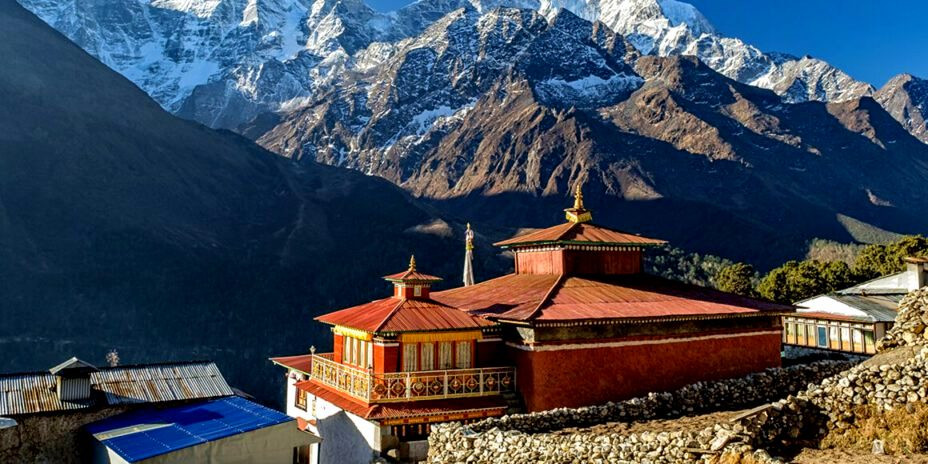
-
Spiritual Heritage: Dating back to the 16th century, Pangboche Monastery is a testament to the deep-rooted spiritual traditions of the Sherpa community. It serves as a centre for Buddhist worship and cultural ceremonies, offering a unique glimpse into the spiritual life of the Himalayas.
-
Architectural Significance: The monastery's architecture is a classic example of Tibetan Buddhist style, featuring intricately painted murals and carvings that depict various deities and scenes from Buddhist mythology. The building itself, with its traditional design, complements the stark beauty of its mountainous surroundings.
-
Yeti Relics: Pangboche Monastery was once famous for housing what was claimed to be the hand and skull of a Yeti, or the "Abominable Snowman," making it a place shrouded in mystery and allure. Although these relics are no longer present at the monastery, their legend contributes to the mystique and historical significance of the site.
-
Panoramic Views: The location of Pangboche Monastery offers trekkers stunning views of the surrounding Himalayan peaks, including Ama Dablam, one of the most beautiful mountains in the region. The serene environment of the monastery provides a peaceful respite from the physical challenges of the trek.
-
Cultural Immersion: Visiting the monastery gives trekkers the opportunity to observe and participate in local customs and practices. It's not uncommon for visitors to be welcomed into ceremonies or to receive blessings from the resident monks, offering a profound sense of connection to the local culture.
-
Acclimatisation Stop: For many trekkers, Pangboche serves as an acclimatisation stop on their journey to higher altitudes. The monastery provides a compelling reason to explore the area and engage in light hikes around the village, aiding in the adjustment to the altitude.
-
Community Support: The monastery plays a crucial role in the local community, functioning as a place of education, spiritual guidance, and social gathering. By visiting, trekkers contribute to the monastery's upkeep and the welfare of the community through donations and engagement.
Pangboche Monastery embodies the rich cultural tapestry and spiritual depth of the Everest region. Its historical significance, combined with its breathtaking location, makes it a must-visit for those trekking to Everest Base Camp, offering insights into the traditions and beliefs that have shaped the lives of the Sherpa people for centuries.
Everest View Hotel
The Everest View Hotel, situated in the heart of the Khumbu region at an elevation of 3,962 metres (13,000 feet), stands as a marvel of high-altitude hospitality and is listed in the Guinness Book of World Records for being the highest-placed hotel in the world. Opened in 1971, this hotel offers unparalleled panoramic views of the majestic Mount Everest and its surrounding peaks, providing guests with a luxurious and serene environment amidst the rugged beauty of the Himalayas. Here are the key features that make the Everest View Hotel a unique and unforgettable experience for visitors:
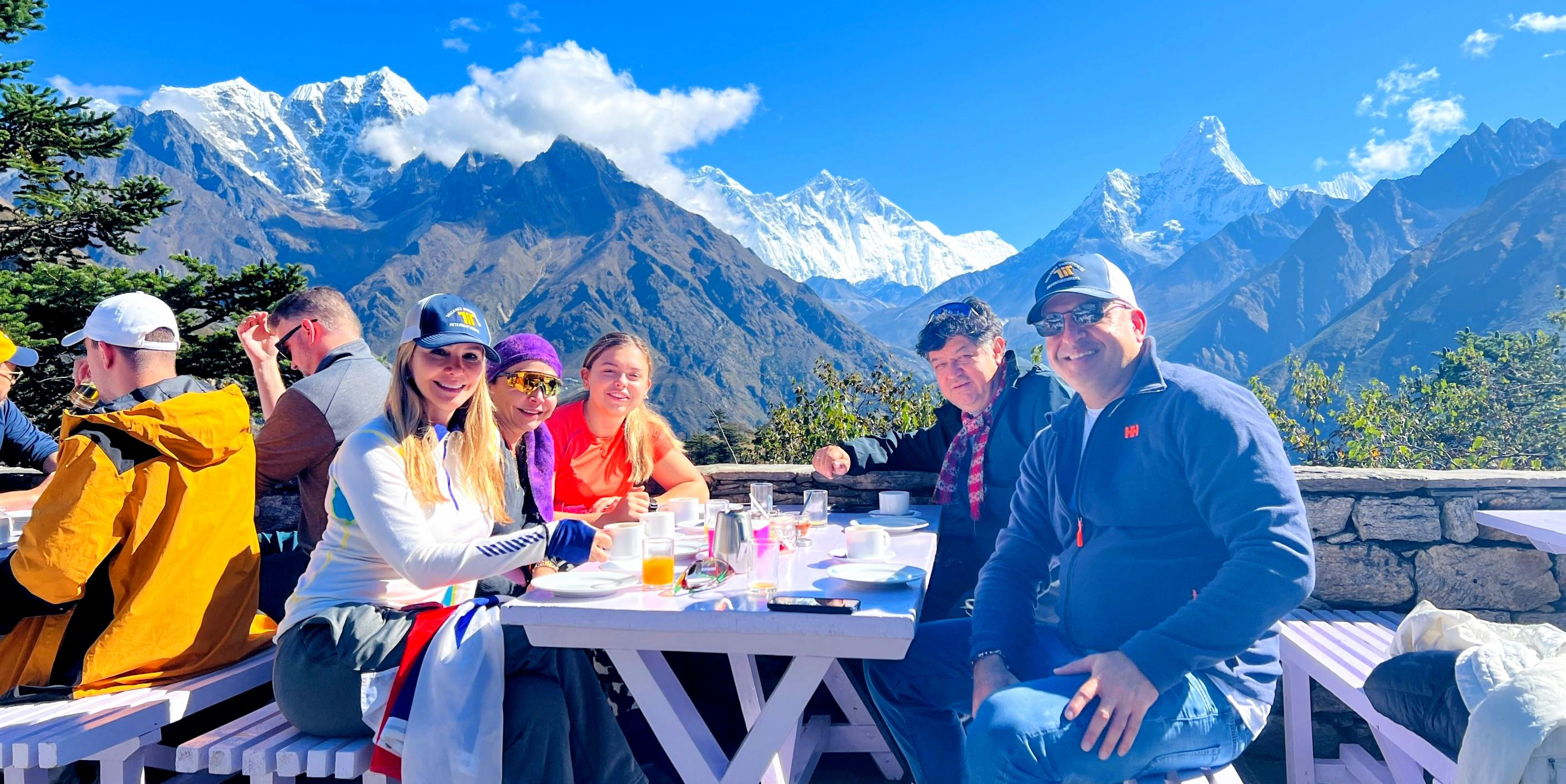
-
Breathtaking Views: The hotel's prime location ensures that every room offers a direct view of Mount Everest and other high peaks like Ama Dablam, Lhotse, and Nuptse. Guests can enjoy these spectacular vistas from the comfort of their rooms or the hotel’s terraces and gardens.
-
Accessibility: Despite its remote setting, the Everest View Hotel is accessible via a scenic trek from Namche Bazaar, making it a perfect acclimatization stop for trekkers heading to Everest Base Camp. For those seeking a more direct route, the hotel can also be reached by helicopter, offering an aerial perspective of the Himalayas.
-
Luxury Amidst Wilderness: The hotel provides a level of comfort and luxury that is rare in such remote parts of the world. With its well-appointed rooms, traditional Sherpa hospitality, and amenities like oxygen for those adjusting to the altitude, guests can enjoy a comfortable stay in the heart of the Himalayas.
-
Eco-Friendly Practices: The Everest View Hotel is committed to sustainability and minimizing its environmental impact. It utilizes solar energy for heating and employs various eco-friendly practices to ensure the preservation of the pristine natural environment it resides in.
-
Cultural Immersion: Staying at the hotel offers guests the opportunity to immerse themselves in the local Sherpa culture. The hotel’s architecture and interiors reflect traditional designs, and guests can explore nearby villages and monasteries to gain a deeper understanding of the region’s heritage.
-
Gourmet Dining with a View: The hotel’s restaurant serves a range of Nepali, Japanese, and international cuisine, allowing guests to enjoy delicious meals with the backdrop of the world’s highest mountains. This dining experience is unparalleled and adds to the allure of staying at the Everest View Hotel.
-
Ideal for Non-Trekkers: For those who wish to experience the beauty of the Everest region without embarking on an extensive trek, the Everest View Hotel offers the perfect solution. It provides a way to witness the grandeur of the Himalayas in comfort and style.
-
Photography and Relaxation: The hotel serves as an ideal spot for photography enthusiasts and those seeking tranquilly away from the busier trekking routes. Its peaceful environment, coupled with the dramatic scenery, makes it a haven for relaxation and reflection.
The Everest View Hotel combines luxury with adventure, offering its guests an extraordinary way to experience the magnificence of the Himalayas. Whether you are a trekker seeking a comfortable respite on your journey or a traveller looking to soak in the breathtaking views in luxury, the Everest View Hotel promises an unforgettable stay.
The Everest Base Camp trek is an unforgettable journey through some of the world’s most majestic landscapes and vibrant cultures. From the adrenaline-filled flight into Lukla to the panoramic views from Kala Patthar, each step introduces trekkers to the incredible beauty of the Himalayas. Highlights like the bustling Namche Bazaar, the serene Tengboche Monastery, and the ancient Pangboche Monastery offer deep cultural insights, while Sagarmatha National Park and the Everest View Hotel showcase the natural splendor of Everest in all its glory. This trek is more than a physical challenge; it's a journey of discovery, offering a glimpse into the heart of the Sherpa culture and the awe-inspiring power of nature. With every step towards Everest Base Camp, trekkers experience a world of unparalleled beauty, making it a truly life-changing adventure.
FAQs for Best Places to Explore During Your Everest Base Camp Trek
Q: What is the best time to trek to Everest Base Camp?
A: The optimal periods are during the pre-monsoon spring months of March to May and the post-monsoon autumn months of September to November, offering clearer skies and moderate temperatures.
Q: How difficult is the Everest Base Camp Trek?
A: It's considered challenging due to its high altitudes, rugged terrain, and length. Proper fitness, acclimatisation, and preparation are key, but they're achievable for most healthy individuals.
Q: Do I need a guide for the Everest Base Camp Trek?
A: While independent trekking is possible, a guide enhances safety and the overall experience by providing cultural insights, logistical support, and emergency assistance.
Q: What should I pack for the Everest Base Camp Trek?
A: Essential items include thermal clothing, waterproof layers, trekking boots, sleeping bags, sunglasses, sunscreen, a day pack, and a hat and gloves. Also, consider personal medications and a first-aid kit.
Q: How do I prevent altitude sickness on the trek?
A: Ascend slowly, stay hydrated, avoid alcohol, eat high-calorie meals, and consider medications like acetazolamide (Diamox) as a precaution.
Q: Can I charge my electronic devices during the trek?
A: Most teahouses offer charging facilities for a fee. Electricity can be unreliable, so additional power banks or solar chargers are recommended.
Q: What permits do I need for the Everest Base Camp Trek?
A: A Sagarmatha National Park entry permit and a TIMS card are required. These are often arranged by guided tours.
Q: Is there internet access on the Everest Base Camp Trek?
A: Internet access is available via local Wi-Fi hotspots in teahouses and lodges for a fee, though it may be spotty. Portable Wi-Fi devices or a local SIM card with a data plan are alternatives.
Q: How long does the Everest Base Camp Trek take?
A: The standard trek usually takes about 12 to 14 days from Lukla to Base Camp and back, including acclimatisation days. The duration can vary based on the itinerary and pace.
Q: Are there any cultural norms or etiquettes I should be aware of?
A: Respect local customs by asking permission before taking photos, dressing modestly, removing shoes before entering homes and temples, and using your right hand or both hands for giving or receiving items.
For the Nepal tour, please click here.
If you are looking for different kinds of Nepal Tours or Trekking Packages, feel free to contact us.
